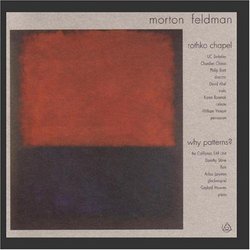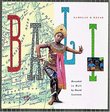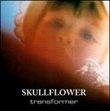| All Artists: Morton Feldman Title: Rothko Chapel Members Wishing: 5 Total Copies: 0 Label: New Albion Records Release Date: 11/18/2009 Genre: Classical Styles: Opera & Classical Vocal, Chamber Music, Historical Periods, Modern, 20th, & 21st Century Number of Discs: 1 SwapaCD Credits: 1 UPC: 022551003927 |
Search - Morton Feldman :: Rothko Chapel
 | Morton Feldman Rothko Chapel Genre: Classical
Rothko Chapel by Morton Feldman |
Larger Image |
CD DetailsSynopsis
Album Description Rothko Chapel by Morton Feldman Similarly Requested CDs
|
CD ReviewsAmbient Beauty Christopher Forbes | Brooklyn,, NY | 07/30/2002 (5 out of 5 stars) "Morton Feldman may have been the prototypical minimalist. His music, though varied in effect, tends to consist of very soft, discrete sounds which slowly morph from pattern to pattern. Though his music falls into periods, roughly divided by notational practice (early music uses primarily graphic scores and aleatoric procedures, later scores tend toward more precise notation, though the rhythms still remain approximate), the effect of his output is remarkably the same throughout his life. It is intellectually challenging, beautiful ambient music. Rothko Chapel, written to be played in the famous Houston space, is a wonderful piece, one that should win new converts to the Feldman cause. It isn't daunting in length, like many later Feldman pieces, yet it retains the sonic beauty and delicacy of instrumental color that makes Feldman unique. The piece is also remarkably tonal, unlike many other Feldman works. The gorgeous hushed soprano solo sounds like a distant call to prayer. Feldman talks in the liner notes of the influence of Hebrew cantilation and you can hear it, although it is much more distant than most cantilation. This work is an example of the best kind of ambient music. It is endlessly fascinating, and yet seems to have a physical presence that does not depend on your concentration. You can listen intently or just let the sound wash over you.Inclusion of Why Patterns? was a good idea. This work is much more typical of Feldman's style. Written for the combination of flute, glockenspiel and piano, the almost 30 minute work is a slow spinning out of subtley dissonant patterns, all at extremely quiet volume levels. The work doesn't seem to start or stop. It's as if we are dropping in on an eternal piece of music, hanging around a while and then leaving again. As one other reviewer stated, it would be nice to have another version of Rothko Chapel available. With a composer like Feldman, alternative versions can really proove useful. So much of his music depends on chance and the sensitivity of his performers that comparisions are more important than with more standard music. The sound on this CD is wonderful. Thank you New Albion! This is my favorite Feldman CD by far!" A perfect evocation DAC Crowell | 04/05/2000 (5 out of 5 stars) ""Rothko Chapel" was composed for the dedication of the de Menil chapel, for which Mark Rothko created some of his final paintings. The space, in Houston TX, is a downtown quiet space, for contemplation, with only the dark colorfields of Rothko's work as a visual point of focus. The work here is a very beautiful and equally dark counterpoint to those canvases, evocative of both the sense of visual diffusion as well as the inner mystery they seem to conceal within their colorfields. Sometimes seeming like some mysterious shrouded procession, at other times like a distant call to prayer, and with a recurrant vocal figure of a solo voice, evoking a sense of both innocence and encantory devotion, the piece is one of Feldman's shortest but most powerful. And the version performed here is excellent, with very precise yet human performance characteristics...which is just what's required, as a rule, to make Feldman's music 'work'. The accompanying work, "Why Patterns?", is a self-answering rhetorical question...the work asks the question, then answers it perfectly, demonstrating just _why_ Feldman's work from the 1960s onward concentrated on pattern-based structures. This piece reminds me of Philip Glass or Steve Reich's work...but far more understated, with subtile dissonances that would be unheard-of in those two 'minimalists' works. Again, very sensitive and precise playing here from the CA EAR Unit. A highly recommended CD, and a great starting-point release for those who've heard of...but not heard...Morton Feldman's work." Stark and Eerie M. Hori | Urayasu, Chiba Japan | 07/26/2004 (5 out of 5 stars) "A repetitive chorus of female voices, moaning, wailing, like a train heard passing from nowhere to nowhere at three in the morning, this is the coldest offering to the ear I've ever heard. And yet, somehow, it fits both Rothko's work and the manner of his death. After the Zen no-mind of the first four tracks, Feldman embraces his listeners and--by proxy--Rothko's spirit--in the 5th track, which offers us a "warm" and charming cello motif, that the composer, in his collected writings, tells us he composed at age 15. Rothko Chapel is then, a radical listening experience of "outside" (as in interstellar space), and "inside" (as in some catchy riff lifted from Dvorak's "American").
"Why Patterns" is more familiar Feldman territory: think aural disjunction, fragmentation, etc. Exciting, challenging, memorable--these are the three key words I would apply to this CD. " |

 Track Listings (6) - Disc #1
Track Listings (6) - Disc #1
